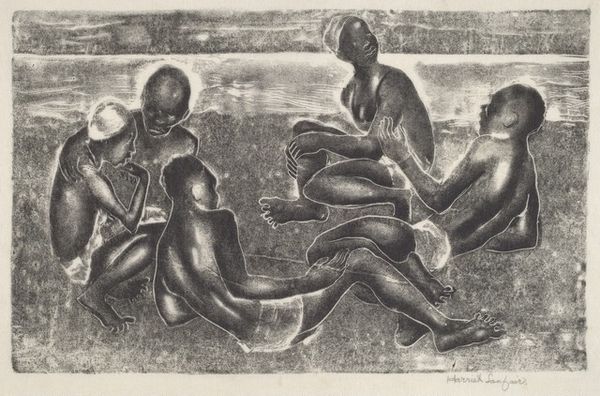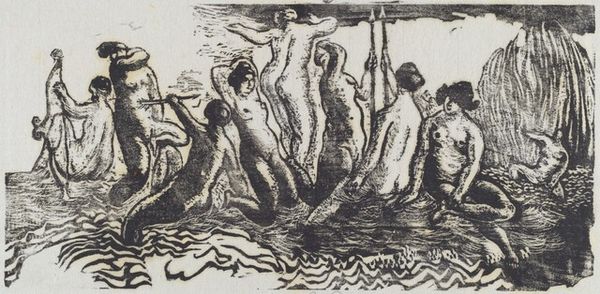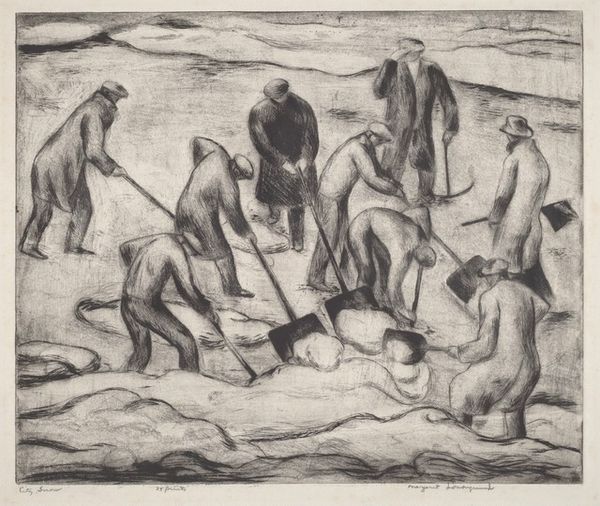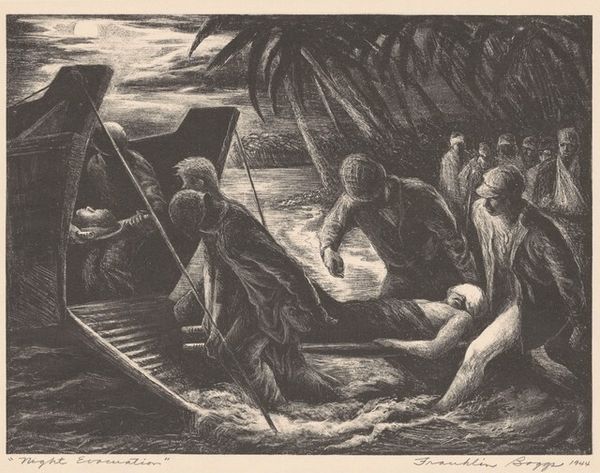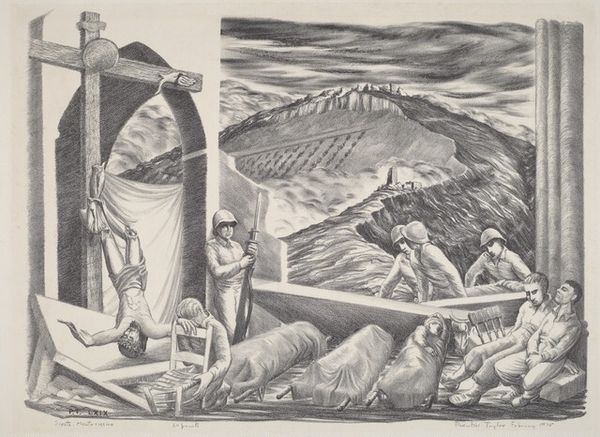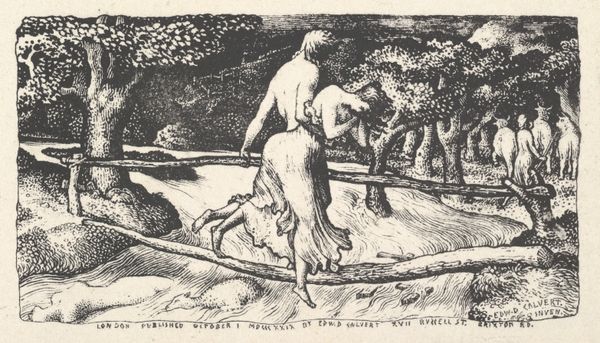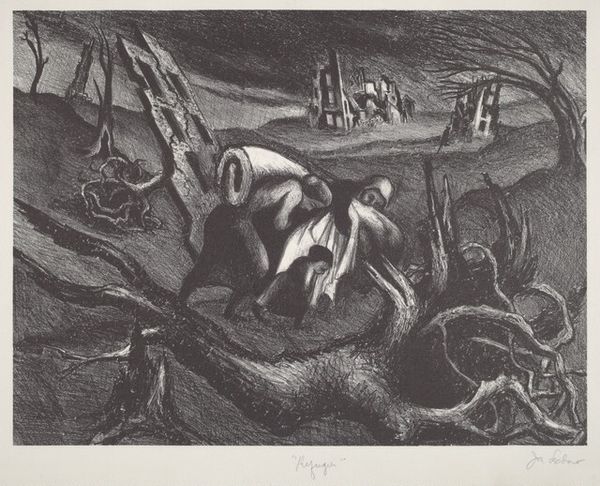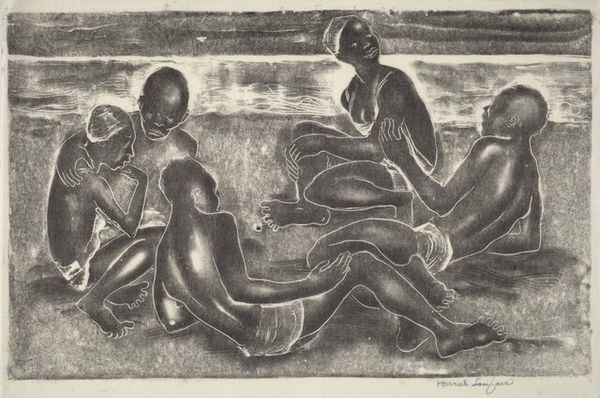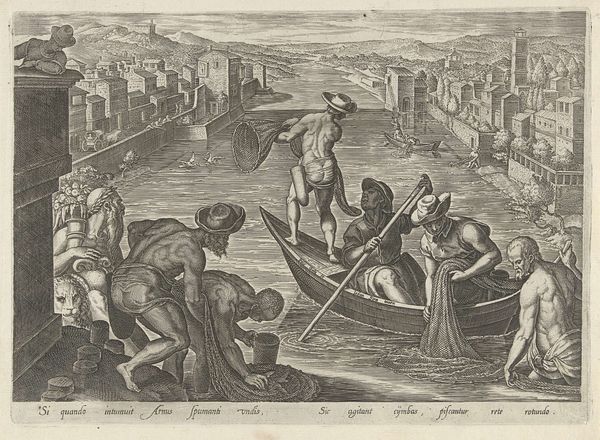
drawing, print, paper, pencil, graphite
#
drawing
# print
#
landscape
#
figuration
#
paper
#
pencil drawing
#
pencil
#
graphite
#
academic-art
#
graphite
Dimensions: image: 230 x 310 mm sheet: 305 x 452 mm
Copyright: National Gallery of Art: CC0 1.0
Curator: This graphite drawing, rendered in 1940, is entitled "Arcadian Interlude" by Clay Edgar Spohn. The artist works within the traditions of landscape and figuration. Editor: It feels like a scene ripped from a myth, but which one? The pyramids in the distance complicate it. Is this supposed to be utopia, or a deconstructed memory of one? There's something unsettling in the shading, maybe it's my expectations of sunshine from the title clashing against the mood. Curator: Well, the figures certainly appear classical—you have nudes, a rider on horseback. Then, like you noted, there are the pyramids, hinting at the deep, enduring memory of civilizations, even those considered lost or changed beyond recognition. The artist creates this stark contrast between past ideals and something more…forbidding. Editor: Exactly! It’s Arcadia through a cracked lens, almost as if Spohn is warning us against romanticizing the past. What initially appears serene – a figure reading peacefully – soon becomes a tableau with undertones of stoicism, even sadness. Like they are posing, waiting for the next part of the show. Curator: Absolutely, and that's part of what the Arcadian theme traditionally evokes—a longing for simpler, more virtuous times. I think the interweaving of these very classical elements and the distinct landscape in which it takes place suggests something both familiar and unnervingly unknown. There are also, like you suggest, narrative expectations for those well versed in ancient history or mythology. Editor: Right, and look closer. These figures aren't interacting—they’re almost frozen in their isolated activities, with their skin adorned with intricate carvings as if to be frozen relics. What is it they are reading and what are they waiting for, or what do they hope to return to after this brief, uneasy 'Interlude?' This isn’t just about beauty, or at least, not in any simple sense. Curator: Indeed, by confronting us with the silent tableau, Spohn urges us to explore and confront our preconceptions about beauty and how it relates to these idyllic or perhaps false perceptions of a golden age. The cultural memory that permeates these traditions does seem to take on something almost nightmarish and alien here. Editor: Well, after seeing how charged even a drawing can be, I'll think differently the next time I pass through the classics section.
Comments
No comments
Be the first to comment and join the conversation on the ultimate creative platform.
